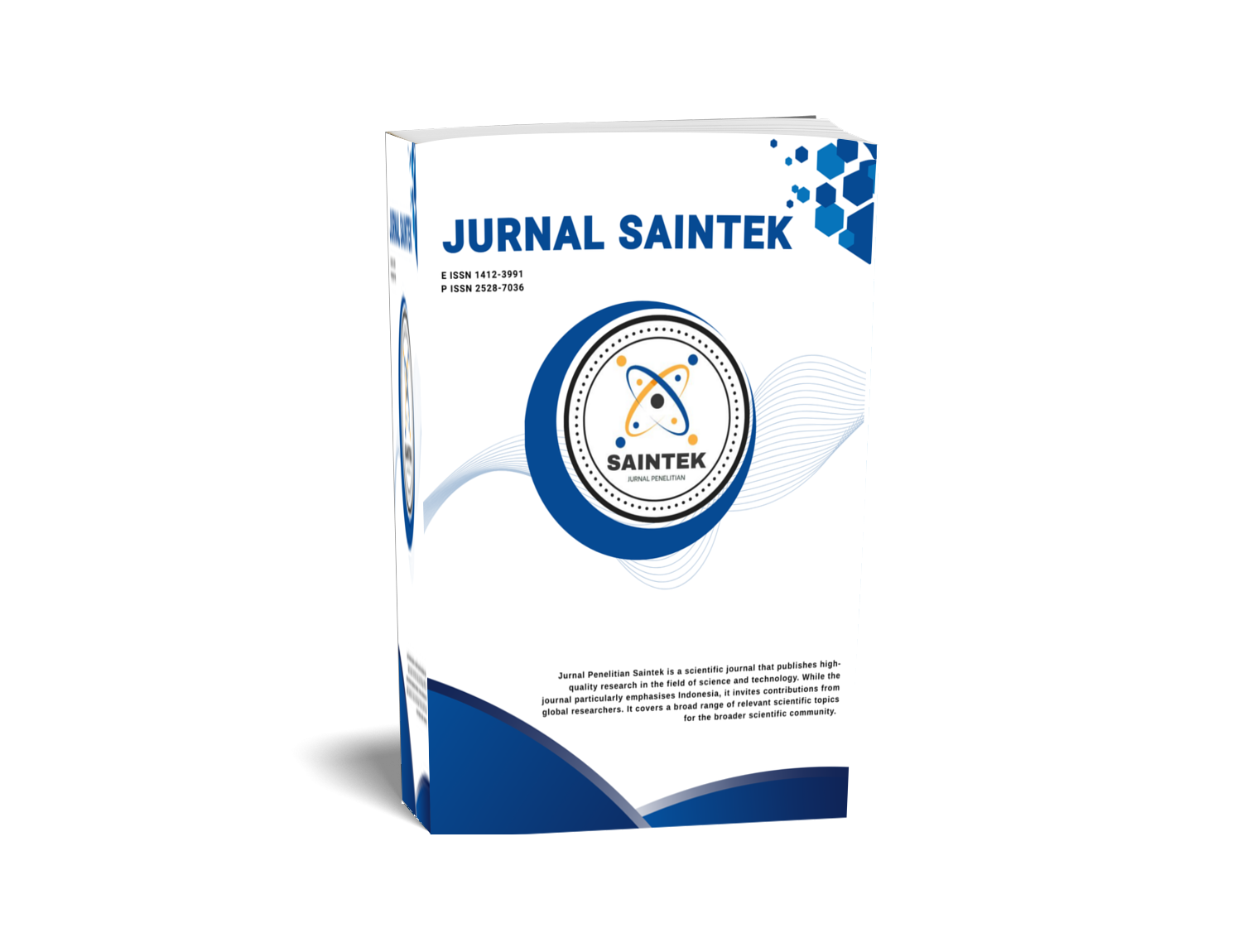RESPONS FISIOLOGIS DAN ANATOMI AKAR TANAMAN BAYAM (Amaranthus tricolor L.) TERHADAP CEKAMAN NaCl
DOI:
https://doi.org/10.21831/jps.v25i1.27357Keywords:
Amaranthus tricolor, NaCl, pertumbuhan, akarAbstract
Tujuan dari penelitian ini untuk mengetahui pengaruh cekaman NaCl terhadap pertumbuhan dan anatomi akar tanaman bayam serta mengetahui konsentrasi NaCl yang dapat menghambat pertumbuhan tanaman bayam. Penelitian ini digunakan perlakuan NaCl sebanyak 0, 200, 400, 600 dan 800 mM pada tanaman bayam (Amaranthus tricolor L.), Media tanam berupa campuran tanah dan pupuk kandang dan alkohol, safranin, aseton. Alat yang digunakan adalah med line, cawan poerslen, spektrofotometer dan mikroskop. Parameter yang diukur meliputi tinggi tanaman, jumlah daun, warna daun, panjang akar, jumlah akar, berat basah, berat kering, kadar klorofil, tebal epidermis akar, tebal korteks akar dan diameter stele akar. Data dianalisis dengan uji ANOVA dilanjutkan dengan DMRT taraf kepercayaan 95% menggunakan program SPSS 15. Hasil yang diperoleh menunjukkan penambahan NaCl menyebabkan penurunan pertumbuhan tanaman bayam meliputi tinggi tanaman, jumlah daun, kadar klorofil, rasio tajuk dibanding akar dan menurunkan diameter stele akar. Pertumbuhan tanaman menurun seiring peningkatan konsentrasi NaCl karena NaCl menyebabkan cekaman osmotik yang menghambat penyerapan air dan unsur hara yang diperlukan tanaman untuk proses metabolisme.
PHYSIOLOGICAL RESPONSE AND ANATOMY OF ROOTY PLANT [ Amaranthus tricolor L.] AGAINST NaCl
The study was aimed at determining the effect of NaCl stress on the growth and anatomy of spinach roots and the concentration of NaCl which can inhibit the growth of spinach plants. This study used 0, 200, 400, 600 and 800 mM NaCl treatments on spinach (Amaranthus tricolor L.), planting media in the form of a mixture of soil and manure and alcohol, safranin, acetone. Med line, poerslen cup, spectrophotometer, and microscope were used in this study. The parameters measured plant height, number of leaves, leaf color, root length, number of roots, wet weight, dry weight, chlorophyll content, root epidermis thickness, root cortex thickness, and root stele diameter. The collected data then were analyzed by ANOVA test followed by DMRT 95% confidence level using the SPSS 15 program. The results obtained showed that the addition of NaCl caused a decrease in spinach plant growth including plant height, the number of leaves, chlorophyll content, the ratio of the crown to root and decreased diameter of root stele. Plant growth decreases with increasing NaCl concentration since NaCl causes osmotic stress. This stress inhibits the absorption of water and nutrients needed by plants for metabolic processes.
References
Chutipaijit, S., Cha-Um, S., & Sompornpailin, K. (2009). Differential accumulations of proline and flavonoids in indica rice varieties against salinity. Pak. J. Bot, 41(5), 2497-2506.
Croser, C., Renault, S., Franklin, J., & Zwiazek, J. (2001). The effect of salinity on the emergence and seedling growth of Picea mariana, Picea glauca, and Pinus banksiana. Environmental Pollution, 115(1), 9-16.
Djanaguiraman, M., Sheeba, J. A., Shanker, A. K., Devi, D. D., & Bangarusamy, U. (2006). Rice can acclimate to lethal level of salinity by pretreatment with sublethal level of salinity through osmotic adjustment. Plant Soil, 284, 363-373.
Marschner, P., Kandeler, E., & Marschner, B. (2003) Structure and function of the soil microbial community in a long-term fertilizer experiment. Soil Biology and Biochemistry, 35, 453-461.
Munns, R., & Tester, M. (2008). Mechanisms of salinity tolerance. Annual Review of Plant Biology, 59, 651-681.
Omami, E. N. (2005). Response of amaranth to salinity stress (Dissertation unpublish report). Department of Plant Production and Soil Science, Faculty of Natural and Agricultural Sciences, University of Pretoria.
Qados, A. M. A. (2011). Effect of salt stress on plant growth and metabolism of bean plant Vicia faba (L.). Journal of the Saudi Society of Agricultural Sciences, 10(1), 7-15.
Sinaga, R. (2007). Analisis metode ketahanan rumput gajah dan raja akibat cekaman kekeringan berdasarkan respons anatomi akar dan daun. Jurnal Biologi Sumatre, 2(1), 17-20.
Staples, R. C., & Toenniessen, G. H (1984). Salinity tolerance in plants. New York: John Wiley & Sons.
Syakir, M., Nur, M., & Januwati, M. (2008). Pengaruh salinasi terhadap pertumbuhan, produksi dan mutu sambiloto (Andrographis paniculate nees). Buletin Littro, 19(2), 129-137.
Tavakkoli, E., Rengasamy, P., & McDonald, G. K. (2010). High concentrations of Na+ and Cl- ions in soil solution have simultaneous detrimental effects on growth of faba bean under salinity stress. Journal of Experimental Botany, 61(15), 4449-4459.
Turan, M. A., Elkarim, A. H. A., Taban, N., & Taban, S. (2009). Effect os salt stress on growth, stomatal resistance, proline and chlorophyll concentrations on maize plant. African Journal of Agricultural Research, 4(9), 893-897.
Downloads
Published
How to Cite
Issue
Section
Citation Check
License
Who Can Submit?
Any individual may submit an original manuscript for consideration for publication in Jurnal Penelitian Saintek as long as they hold the copyright to the work or are authorized by the copyright owner(s) to submit it. Authors retain initial ownership of the copyrights to their works prior to publication, except in cases where, as a condition of employment, they have agreed to transfer copyright to their employer.
User Rights
Jurnal Penelitian Saintek is an Open Access journal. Users are granted the right to read, download, copy, distribute, print, search, or link to the full texts of articles, provided they comply with the conditions of the Creative Commons Attribution-ShareAlike License 4.0 (CC BY-SA 4.0).
https://creativecommons.org/licenses/by-sa/4.0/
Author Rights
Authors retains copyrights.
Jurnal Penelitian Saintek by http://journal.uny.ac.id/index.php/saintek is licensed under a Creative Commons Attribution-ShareAlike 4.0 International License.









